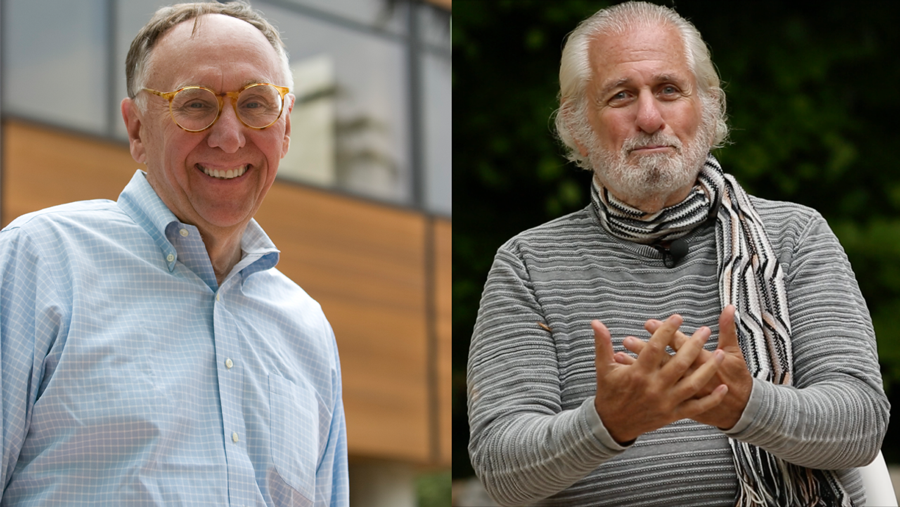
Left: Jack Dangermond. Photo courtesy of Jack Dangermond. Right: Richard Saul Wurman. Photo Courtesy of The Nantucket Project (TNP).
Cartography, placemaking and technology design collided when The Aquarium of the Pacific hosted a conversation in late February between Jack Dangermond, Founder and President of the Environmental Systems Research Institute (Esri) and Richard Saul Wurman, architect and creator of the TED and TEDMED conferences and recipient of the Lifetime Achievement Award from the Cooper-Hewitt Smithsonian Design Museum in New York City. A video of the conversation is now available for anyone to watch.
“It’s a rare treat,” said Jerry R. Schubel, PhD, President and CEO of the Aquarium, as he introduced the two guests, “to be able to listen in on a conversation, an un-programmed, spontaneous exchange and exploration of ideas between two international leaders on how data can be transformed into information that promotes understanding to help us make better decisions from where to locate a muffler shop to making a better future for the planet.”
Wurman and Esri partnered with Radical Media—the minds behind everything from surrealist Geico ads to the music video for Sia’s “Chandelier”—to develop The Urban Observatory, an interactive online exhibit and app that allows its users to compare cities around the world side-by-side using themes such as current temperatures, highway access, railroads, road speed and population density, to name just a few factors. The origins of Urban Observatory, the overarching idea of “Transforming Big Data Into Big Understanding,” was discussed at length at the Aquarium conversation.
Dangermond showed a film which stated that “by 2050, two-thirds of the world’s population will live in cities,” raising the question, what will this look like? How will residents move about their environments? How will they communicate with each other? Three cities, London, Singapore and New York, were shown on a screenshot from The Urban Observatory, side-by-side to compare highway access, and showed very apparently that comparatively, London is quite difficult to drive completely through, with the majority of its access to highways surrounding its outskirts.
“Saul built these first models to compare cities at common scale,” said Dangermond. “When we began to explore this his thought was, ‘Can we actually take various themes in each city at the same scale, where old people live, where urbanization is, densities, land uses and make them available as a web maps,’ and not simply web maps that tell the story about the city but also be able to compare them.”
He continued, “So I could put, say, Paris next to Los Angeles and look at the open space and suddenly realize, “Huh, Paris is very different experientially to Los Angeles,’ and here’s the reason why.”
The two leaders discussed the roles of maps, map-making and geographic information systems in charting a course for a better future, whether it’s simply a matter of studying a city’s basic infrastructure or simply finding a better way to navigate its geography. The short film about Wurman, preceding the discussion, informed attendees about informational mapmaking. Hopefully the following quotes, taken from the introductory short film preceding the discussion, taken from the mind of a man who created the TED conferences, can inspire a curiosity in those
Wurman’s voice accompanied an animated timeline of his journey through the pitfalls and highs of delving into information architecture. He described his devotion to ignorance as his “[…]passion [being] the simple journey from not knowing to knowing.” He discussed theories of mapmaking, saying that, “A map is a pattern made understandable. Mankind’s ability to perceive is a map.” He brought a map’s significance to light, saying, “The organization of information actually creates new information.” He spoke about his life’s work, explaining, “I strive to discover what it’s like not to understand.”
The conversation can be watched here, courtesy of the Aquarium of the Pacific. The initial video shown is just a clip, so make sure to download the file if you’re interested in hearing the conversation in its entirety.
Images courtesy of the Aquarium of the Pacific.

